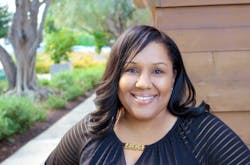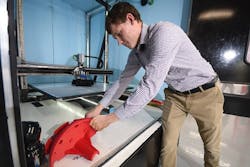Over the past five years, there has been a focus on the water industry’s workforce. A large population of today’s water professionals will retire within the next five to 10 years, and the industry is not prepared for this.
Skills that have been honed for more than a generation and knowledge that has been gleaned through hands-on work in the field are at risk of being lost. What’s more, businesses in the water infrastructure industry are working to figure out how to attract the next generation of employees, who are, in some cases, being courted by the Fortune 500, high-tech companies and start-ups. Competition can be fierce.
Here is where our industry has a distinct advantage. Research shows that millennials cite having a career that makes a positive impact in the world as a top priority when choosing a job. As an industry, our work delivers clean, safe drinking water to populations around the globe. Therefore, we have a pretty good advantage.
The question then becomes—how do we leverage the opportunity to work in an industry that serves and provides such a vital need into attractive jobs for this new generation of workers? The answer is to go beyond the anecdotal perceptions to find out what is really important to millennial employees, just as we would any other employees.
Making a Positive Impact
The majority of millennials say they are passionate about protecting the environment and seek to rally around impactful causes. Eighty-three percent of millennials say they would be more loyal to a company that contributes and helps them contribute to social and environmental causes. Our industry easily lends itself to providing this opportunity to millennial employees. After all, people can live without a lot of things, but water is not one of them. Now, translating that into how we position this noble cause in our brand and recruiting efforts becomes critical.
In order to be truly competitive, we must first acknowledge the workforce gap and allow it to inform how we talk about our company’s brand, from the C-suite to Twitter all the way through to human resources professionals at recruiting events on college campuses. The brand story and promise must be authentic and consistent. Otherwise, these prospective employees will see right through it. In case you have not noticed, everyone Googles everything.
Successfully attracting and retaining this generation requires a coordinated and internal effort between executive leadership, human resources, marketing and communications to develop a set of values that are real and attainable.
Flexibility Is Key
An Ernst & Young study showed that 75% of millennials want the ability to work flexibly and still be on track for promotion. Historically, corporate cultures have penalized employees who need or ask for more flexibility in work schedules and location. However, millennial employees not only desire it, they are in a position to command it. With competition from hundreds of employers for their skills and the fact that they make up the largest working population (and will continue to do so for the foreseeable future), this highly educated generation is afforded a wide range of job opportunities.
One-on-One Time With Managers
Our human nature guides us to seek interaction with others, and the workplace is not excluded from this. Millennials rank one-on-one time with their managers high on their list of requirements for an ideal job.
A culture where managers are encouraged to schedule dedicated time with individual employees is critical to attracting and retaining millennials. The bulk of this time should be for the employee to share their weekly and/or biweekly goals and call out any specific areas where they need their manager’s support to succeed.
These meetings can take many forms, including in the manager or employee’s office, over a cup of coffee, outside on a walk around the office building or via video chat. The most important thing is that the meeting is focused on the individual employee and how the manager can support them in their day-to-day work as well as their career. A tried and true format to accomplish successful one-on-one meetings is to schedule the year out in advance on a consistent day and time so the employee can be prepared and sees that the manager takes the meeting seriously.
Perks
When some employers hear the word “perks” in relation to employees, they generally give a scoff or an eye roll. However, employers who want to compete for the brightest minds understand that perks can mean several different things. Most importantly, they accept and embrace the research that shows offering non-traditional extras translates in the minds of millennials as taking good care of their employees. This, in turn, increases productivity and profitability.
U.S. businesses have come a long way in offering benefit packages that go beyond the traditional health care and dental plans. Today’s employee expects extras—for example, perks such as discounted gym memberships and onsite wellness rooms.
For millennials, factors such as paid parental leave for both men and women are reasons cited to stay with a company. Additionally, remote work, free food and paid time off to volunteer have proven to be highly attractive to prospective millennial job candidates. Companies that are seeking to truly outpace rival employers are exploring matching employee contributions to student loans, four-day work weeks and expanded parental programs, including money toward adoption. While all these ideas probably will not be implemented at most companies, those seeking to gain a competitive advantage will look for ways to incorporate at least some of these “perks.”
It is clear that the workforce gap continues to widen, but there is no need for panic. It is time for action. Smart companies will consider attracting and retaining the next generation of workers a strategic imperative. For the water industry, it will be critically important that we do not miss the proverbial wave.
About the Author
Yolanda Coleman Kokayi
Senior Director of Marketing & Communications
Yolanda Kokayi is senior director of marketing and communications for Mueller Water Products.

